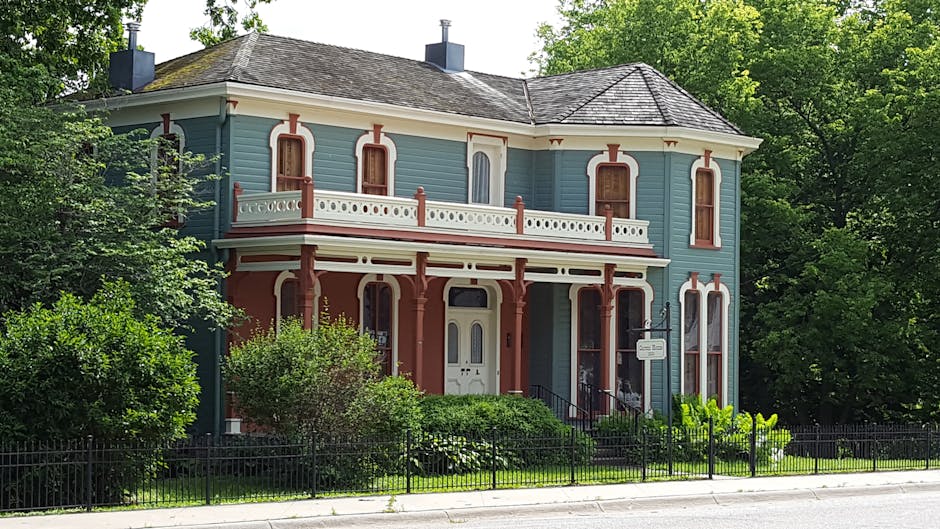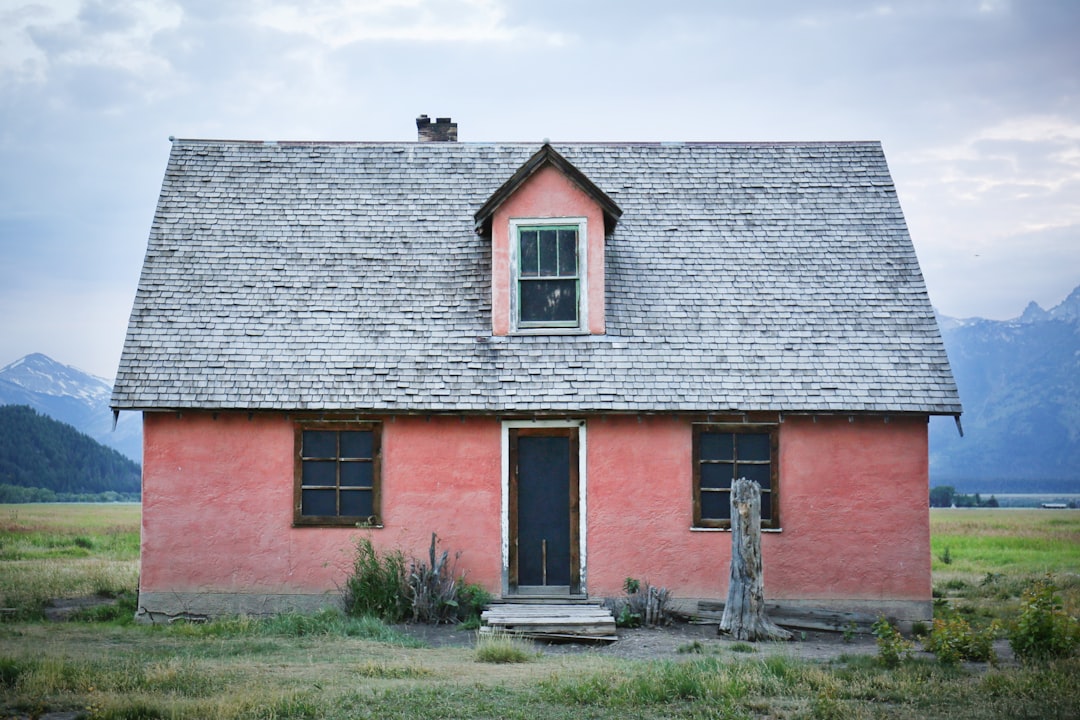The Gable End of a House: Definition, Design, and Benefits

What is a Gable End of a House?
The gable end of a house is the triangular section of the exterior wall that sits below the sloping ends of a gable roof. Whether you’re thinking about adding aesthetic appeal to your home or curious about its architectural aspects, understanding the gable end of a house is essential. Here’s what you need to know:
Definition: The gable end is typically where the roof meets the house’s walls, creating a triangular shape.Design: Gable ends can be simple and minimalist or elaborate with intricate woodwork and decorative features.Benefits: They offer additional space in the attic, improved ventilation, and can improve the overall appearance of your home.
I’m Paul Schneider, an insurance expert with a keen interest in home architecture. With years of experience in helping homeowners protect their properties, I have a comprehensive understanding of the gable end of a house and its importance in your home’s design and functionality.
Next, let’s dig deeper into the specifics of what a gable end is and its various design elements.
Key terms for gable end of house:
– difference between a hip and gable roof
– hip roof vs gable cost difference
What is a Gable End of a House?
The gable end of a house is the triangular section of an exterior wall that is formed between the two sloping sides of a gable roof. This architectural feature is not only a defining element of a home’s silhouette but also plays a crucial role in its structural integrity and aesthetic appeal.
Triangular Section
The most distinguishing characteristic of the gable end is its triangular shape. This triangle is created where the two sloping sides of the roof meet. The point at the top of the triangle is known as the “ridge,” and the base of the triangle aligns with the eaves of the roof.
Sloping Roof
A gable roof includes two sloping sides that meet at the ridge, creating the triangular gable end. This design is both functional and visually appealing. The sloping sides help direct rainwater and snow away from the house, reducing the risk of leaks and structural damage.
End Wall
The gable end forms the end wall of the house, which can be constructed from various materials such as wood, brick, or stone. This wall often includes windows or other architectural features that add to the home’s overall design.
Exterior Materials
The materials used for the gable end can significantly impact the house’s appearance and durability. Common materials include:
Clapboard: Often used in traditional and colonial-style homes, clapboard is a type of wooden siding that provides a classic look.Shingles: Shingle siding, made from wood, vinyl, or fiber cement, offers a textured appearance and is commonly found in Victorian-era homes.Stone: Stone cladding adds a rustic, durable finish to the gable end, often seen in Tudor Revival and Gothic Revival styles.Weathered Wood: This material gives a warm, natural look, blending well with rustic or country-style homes.
Each material has its own set of benefits and aesthetic qualities, allowing homeowners to customize the look of their gable end to match their personal style and the architectural theme of their home.
Understanding the gable end of a house is essential for anyone interested in home design or architecture. This key feature not only defines the shape and structure of the roof but also offers numerous opportunities for aesthetic improvement and functional benefits.
Next, let’s explore the various design elements that can be incorporated into gable ends to improve their visual appeal and functionality.
Design Elements of Gable Ends
Gable ends are more than just structural components; they offer a canvas for various design elements that can improve a home’s aesthetic appeal. Let’s explore the different cladding options and ornamentation that can make gable ends stand out.
Cladding Options
The choice of cladding for a gable end significantly impacts the home’s look and feel. Here are some popular options:
Clapboard: Common in traditional and colonial-style homes, clapboard is a type of wooden siding that provides a classic, timeless appearance. Its horizontal lines create a clean, structured look.
Shingles: Shingle siding, made from materials like wood, vinyl, or fiber cement, offers a textured appearance. This is a popular choice for Victorian-era homes, adding intricate detail and charm.
Stone: Stone cladding adds a rustic and durable finish to the gable end, often seen in Tudor Revival and Gothic Revival styles. The rugged texture and natural color variations of stone can create a dramatic effect.
Weathered Wood: This material gives a warm, natural look, blending well with rustic or country-style homes. Over time, weathered wood develops a patina that adds character and depth to the exterior.
Ornamentation and Decorative Features
Ornamentation can transform a simple gable end into a stunning architectural feature. Here are some common decorative elements:
Bargeboard: Also known as vergeboard, this is the decorative trim along the edge of the gable roof. In Tudor Revival homes, bargeboards often feature intricate carvings that add a touch of elegance.
Finial: A finial is a decorative pinnacle or spire that sits at the top of the gable. This element is commonly found in Gothic Revival architecture, adding vertical emphasis and a whimsical touch.
Brackets: These are supportive yet decorative elements placed under the eaves of the gable. They can be simple or elaborate, often seen in Victorian-era homes with intricate designs.
Rake Detail: The rake is the sloping edge of the gable roof. Adding decorative details to the rake, such as molding or intricate cutouts, can improve the visual interest of the gable end.
Architectural Styles
Different architectural styles incorporate unique design elements into gable ends:
Victorian-Era: Known for its elaborate ornamentation, Victorian-era gables often feature intricate spindles, brackets, and fretwork. Clapboard and shingle cladding are common, adding texture and detail.
Tudor Revival: This style draws inspiration from medieval English buildings. Prominent gables with half-timbering—exposed wooden beams with stucco or brick infill—are characteristic. Decorative bargeboards and arched windows are also typical.
Gothic Revival: Gothic Revival gables often include pointed arches, finials, and intricate bargeboard designs. Stone cladding is common, adding to the dramatic and historic feel of the style.
By carefully choosing cladding options and ornamental features, homeowners can create gable ends that not only improve the curb appeal of their homes but also reflect their personal style and the architectural heritage of the building.
Types of Gable Roofs
Gable roofs come in various styles, each with unique features and benefits. Let’s explore some popular types: open gable, box gable, cross-gabled, and flying gable.
Open Gable Roof
An open gable roof is one of the simplest and most common gable roof styles. It features two sloping sides that meet at a ridge, forming a triangular shape at each end.
Features:
– Simplicity: The straightforward design makes it easy to construct and cost-effective.
– Ventilation: The open gable allows for effective ventilation, crucial for attic spaces.
– Versatility: Suitable for various architectural styles, from modern to traditional.
Examples:
– Farmhouses: Often use open gable roofs for their simplicity and functionality.
– Cottages: The open gable design adds charm and character to smaller homes.
Box Gable Roof
A box gable roof is similar to an open gable but includes boxed eaves at the ends, enclosing the triangular section.
Features:
– Improved Protection: The boxed eaves offer better protection against the elements.
– Aesthetic Appeal: Provides a clean, finished look that can improve a home’s curb appeal.
– Structural Support: The boxed design adds extra stability to the roof structure.
Examples:
– Colonial Homes: Often feature box gable roofs, adding a classic and refined appearance.
– Victorian Houses: The boxed eaves can be adorned with decorative trim, enhancing the ornate style.
Cross-Gabled Roof
A cross-gabled roof consists of two or more gable roof sections that intersect at a right angle, creating a complex and visually interesting roofline.
Features:
– Architectural Interest: The intersecting gables add depth and dimension to the roof.
– Multiple Roof Lines: Allows for varied roof heights and angles, adding to the home’s aesthetic appeal.
– Functional Space: The intersecting sections can create additional attic or living space.
Examples:
– Tudor Revival Homes: Often incorporate cross-gabled roofs, emphasizing the picturesque and romantic style.
– Large Residences: The complex roofline suits bigger homes, adding grandeur and architectural variety.
Flying Gable Roof
A flying gable roof, also known as a prow gable, extends the gable ridge beyond the eaves, creating a pointed overhang.
Features:
– Distinctive Look: The extended ridge creates a unique, dramatic appearance.
– Weather Protection: The overhang provides additional protection against rain and snow.
– Improved Ventilation: The extended ridge can improve airflow, aiding in attic ventilation.
Examples:
– Mountain Cabins: Often use flying gable roofs to blend with the rugged landscape and provide extra weather protection.
– Rustic Homes: The dramatic overhang adds to the rustic charm and character of these homes.

Each type of gable roof offers unique benefits and can be custom to suit various architectural styles and functional needs. Whether you prefer the simplicity of an open gable or the dramatic flair of a flying gable, there’s a gable roof design to match your home’s aesthetic and practical requirements.
Benefits of Gable Roofs
Gable roofs are popular for many reasons. They offer several practical benefits that make them a favorite among homeowners and builders alike.
Simplicity and Cost-Effectiveness
One of the main advantages of gable roofs is their simplicity. The design is straightforward, with two sloping sides that meet at a ridge, forming a triangular shape at each end. This simplicity makes gable roofs easier and less expensive to build compared to more complex roof styles like hip roofs.
Easy to Design: The straightforward structure is simple for architects and builders to plan and execute.Less Expensive: Fewer materials and less labor are needed, reducing overall costs.Straightforward Construction: The uncomplicated design speeds up the construction process, saving time and money.
Increased Attic Space
Gable roofs also provide more attic space than other roof styles. The steep slope of the roof creates a spacious attic that can be used for storage or even converted into additional living space.
More Storage: The extra space can be used to store seasonal items, old furniture, or anything else that needs to be tucked away.Potential for Additional Rooms: With some modifications, the attic space can be transformed into a bedroom, office, or playroom.
Improved Ventilation
Proper ventilation is crucial for maintaining a healthy and comfortable home environment. Gable roofs are excellent for promoting good airflow, which helps regulate temperature and prevent moisture buildup.
Gable Vents: These can be installed at each end of the roof to allow air to circulate freely.Airflow: The sloping design encourages natural ventilation, helping to keep the attic and the rest of the house cool.Temperature Regulation: Improved airflow helps maintain a consistent temperature, reducing the need for air conditioning and heating.
Gable roofs are a practical and cost-effective choice for many homeowners. They offer simplicity, increased attic space, and improved ventilation, making them a versatile and functional option for various types of homes.
Gable End of House: Practical Considerations
When it comes to the gable end of a house, there are several practical considerations to keep in mind. These include weather resistance, structural support, and aesthetic appeal. Each of these factors plays a crucial role in the overall functionality and appearance of your home.
Weather Resistance
The gable end of a house must be able to withstand various weather conditions, including wind, rain, snow, sleet, and hail. This is especially important in areas prone to extreme weather events.
Wind: Gable ends are particularly vulnerable to high winds, which can cause uplift and even structural damage. Proper bracing and secure construction are essential to prevent wind damage.Rain and Snow: The sloping design of gable roofs helps to shed rain and snow efficiently, preventing water accumulation and potential leaks.Sleet and Hail: Durable materials and proper cladding can protect the gable end from impact damage caused by sleet and hail.
Structural Support
Structural support is another critical consideration for the gable end of a house. Proper bracing ensures stability and longevity.
Bracing: Diagonal bracing can be used to strengthen the gable end, making it more resistant to wind and other forces.Diagonal Bracing: This type of bracing adds extra support and helps distribute loads more evenly across the structure.Stability: Ensuring that the gable end is well-supported contributes to the overall stability of the house, reducing the risk of structural failure.
Aesthetic Appeal
The gable end also plays a significant role in the aesthetic appeal of a home. It can improve curb appeal and add architectural interest.
Curb Appeal: A well-designed gable end can make a house more attractive, increasing its market value and appeal to potential buyers.Architectural Interest: Features like bargeboards, finials, and intricate rake details can add character and uniqueness to the gable end.Customization: Homeowners can customize the gable end with various cladding options, such as clapboard, shingles, or weathered wood, to match their personal style and the overall design of the house.




By considering weather resistance, structural support, and aesthetic appeal, you can ensure that the gable end of your house is both functional and beautiful.
Frequently Asked Questions about Gable Ends
What is a house gable end?
A house gable end is the triangular section of a wall formed by a sloping roof. This part of the wall extends from the eaves to the peak of the roof. The gable end is a defining feature of homes with gable roofs, which have two sides that slope downward toward the walls.
What are the gables on a house?
Gables on a house refer to the triangular portion of the wall between the edges of intersecting roof pitches. These gables are not just decorative; they are integral parts of the structural system of the house. They help support the roof and protect the interior from weather elements.
What is the difference between a hip end and a gable end?
The main difference between a hip end and a gable end lies in their shape and structure:
In summary, a hip end slopes on all sides, while a gable end has two vertical sides and two sloping sides. This structural difference impacts not only the appearance but also the cost and complexity of construction.
Conclusion
Gable ends are a vital architectural element that not only define the look of a house but also play a crucial role in its structural integrity and weather resistance. From the charming Victorian-era houses with their ornate gables to the sturdy Tudor Revival homes featuring half-timbered designs, gable ends offer a versatile canvas for various architectural styles. They improve curb appeal, provide additional attic space, and improve ventilation, making them a practical and aesthetic choice for many homeowners.
At Schneider and Associates Insurance Agencies, we understand that your home is more than just a building—it’s your sanctuary. That’s why we offer personalized insurance solutions custom to meet your specific needs. Whether you have a cozy cottage with a simple gable roof or a grand Victorian mansion with intricate gables, our team is dedicated to providing you with the right coverage.
Our local touch means we know the unique risks and requirements of different areas, especially here in Florida. We take the time to listen to your needs and understand what’s important to you. This allows us to offer custom coverage that ensures your home is protected, giving you peace of mind.
Ready to secure your home with the right insurance? Get a quote today and let Schneider and Associates Insurance Agencies take care of your insurance needs.



